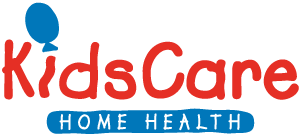
Art therapy is a valuable tool for helping children express their emotions, build confidence, and support their development. It can be highly valuable for children in pediatric home health settings as a therapeutic tool or to help address developmental, emotional, or sensory needs.
What exactly is Art Therapy? Art therapy is a creative expression that is more focused on the process than the outcome of painting, sculpting, collaging, or assembling creative pieces in other ways to work through internal struggles, decompress, or address sensory needs.
How does it work? Typically, a licensed therapist walks through a creative session with a child and utilizes the process as a tool for discussion and a “creative outlet.”
Benefits of Art Therapy for Kids include:
- Encourages self-expression
- Supports fine motor development and hand-eye coordination.
- Reduces stress and anxiety through a creative release.
- Enhances focus, patience, and emotional regulation.
- Builds confidence and problem-solving skills.
Art Therapy Ideas
1. Creating a Collage

- What you’ll need: Magazines, newspapers, scissors, glue, paper.
- What to do: “Find and cut out images or colors that either show how you’re feeling, or give a prompt for a specific mood: i.e., “find things that make you feel happy.”
- Goal: Emotional expression can lead to a discussion.
2. Emotion Wheel Drawing
- Kids draw a circle and divide it into sections—each slice showing a different feeling using colors, symbols, or drawings.
- Great for identifying and labeling emotions.
3. "Safe Place" Painting or Drawing
- Kids create an image of a place that makes them feel calm and secure.
- Helps with emotional regulation and visualization for coping.
4. Music Scribbles

- Play calming or upbeat music and let kids “draw” the music with scribbles or shapes.
- Supports sensory processing and emotional release.
5. Clay or Play-Doh Creations
- Sculpt animals, shapes, or people that represent emotions or family.
- Excellent for sensory input and expression.
6. Color Your Mood
- Give kids a blank sheet and ask them to “draw their mood” using only colors and shapes—no words or objects are allowed.
- Useful for nonverbal children or those with limited vocabulary.
7. Storybook Illustration

- Have kids draw a scene from their favorite story—or illustrate one they create.
- Encourages creativity and literacy connection.
8. Gratitude Art (great for Thanksgiving-themed therapy)
- Kids paint or draw things they’re thankful for.
- Helps generate a positive mindset. Can also help reset.
9. Art Journal Prompts
- “Draw something that made you smile.”
- “Create a picture of your favorite memory.”
- “Design a superhero version of yourself.”
Tips for Parents & Therapists
- Let the child lead—there’s no right or wrong way to create.
- Focus on the process, not the final product.
- Ask open-ended questions (“Can you tell me about your picture?”)
- Keep materials safe and age-appropriate.
- Respect their boundaries—some kids may not want to share their artwork, and that’s OK.
When to Consider Art Therapy as a Tool
- Persistent emotional struggles or trauma.
- Difficulty expressing thoughts or feelings verbally.
- Diagnoses like anxiety, autism spectrum disorder, or ADHD.
- Support during medical recovery or significant life changes.
Closing Thoughts
Art is more than just a fun activity—it’s a bridge to connection, growth, and emotional maturity. If you are looking for ways to help your patients or, as a parent, to engage in discussions with your child, this could be a great and powerful tool to help your child thrive!
Ready to explore how art therapy can support your child’s development?
Contact us today to learn how our pediatric therapists use creative tools like art to help children grow, heal, and thrive.















